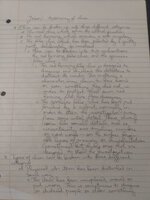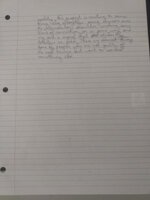Hi there!
I am writing a mystery. I have at least eight viable suspects, two different murders, and the motives are strong. I have several clues already baked in and a few more that I am trying to test out. I have several red herrings (I won't say that everybody has secrets, but let's just say that enough of them have secrets that it's not a level playing field). There are at least two side mysteries (both of which could be the motivation for the murders, but aren't).
Every time I write a mystery, I think "I will never do this again. It's really hard and once I'm done with this, I will never, ever be able to repeat it. Periodt." I can understand why some of the mystery writers I dislike write such predictable, unoriginal stories: this is really, really hard. You cannot write three books a year of this when you are still going back and forth about how that neat clue could be reasonably discovered by the sleuth and worrying that, once you have used that clue idea, you can never ever use it again and you will eventually run out of clever plot ideas.
Agatha Christie structured her murders backward, starting from the end and working the clues backward. This is helpful, as it means that I am having to go backwards and add in scenes in which I introduce characters or have a clue thrown in.
So if there has been someone who found some good tips, I would love to open a conversation about that. Is there any way that you have made mystery writing easier for yourself, if you've done it several times?
I am writing a mystery. I have at least eight viable suspects, two different murders, and the motives are strong. I have several clues already baked in and a few more that I am trying to test out. I have several red herrings (I won't say that everybody has secrets, but let's just say that enough of them have secrets that it's not a level playing field). There are at least two side mysteries (both of which could be the motivation for the murders, but aren't).
Every time I write a mystery, I think "I will never do this again. It's really hard and once I'm done with this, I will never, ever be able to repeat it. Periodt." I can understand why some of the mystery writers I dislike write such predictable, unoriginal stories: this is really, really hard. You cannot write three books a year of this when you are still going back and forth about how that neat clue could be reasonably discovered by the sleuth and worrying that, once you have used that clue idea, you can never ever use it again and you will eventually run out of clever plot ideas.
Agatha Christie structured her murders backward, starting from the end and working the clues backward. This is helpful, as it means that I am having to go backwards and add in scenes in which I introduce characters or have a clue thrown in.
So if there has been someone who found some good tips, I would love to open a conversation about that. Is there any way that you have made mystery writing easier for yourself, if you've done it several times?







